Epiactis ritteri Torrey, 1902Common name(s): Sandy anemone, Ritter's brooding anemone |
|
| Synonyms: Cnidopus ritteri (Torrey, 1902) | 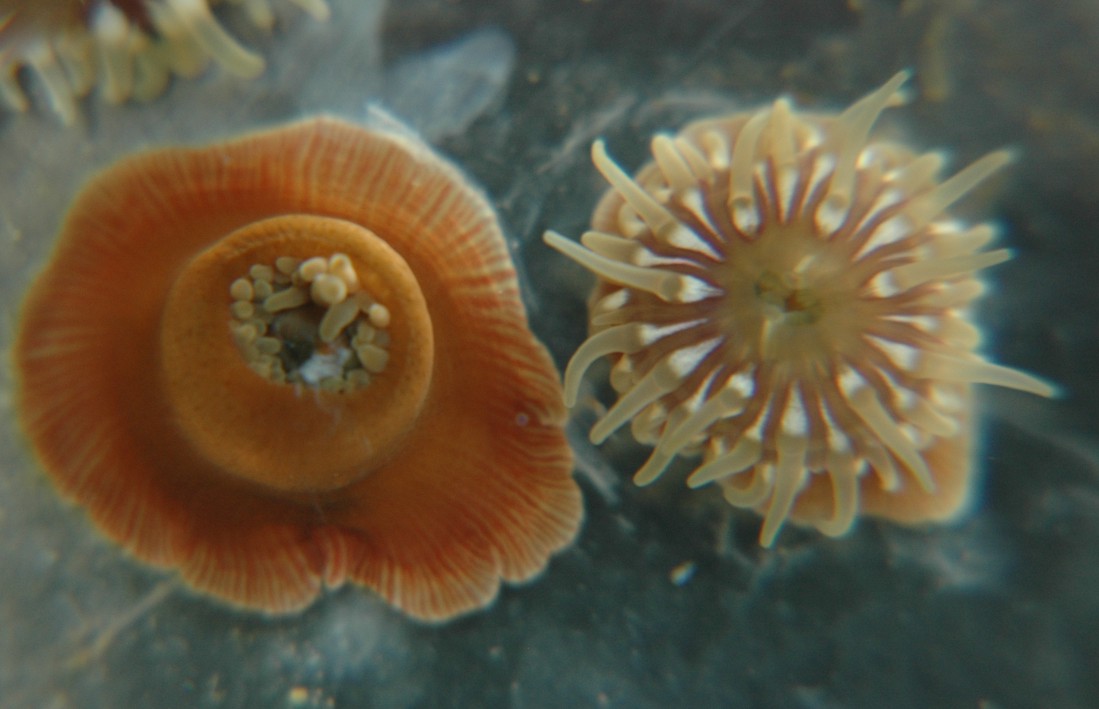 |
| Phylum Cnidaria
Class Anthozoa Subclass Zoantharia (Hexacorallia) Order Actinaria Family Actiniidae |
|
| Two small Epiactis ritteri individuals in Friday Harbor Laboratory, courtesy of Lisbeth Francis. The open anemone is about 1.5 cm diameter and 1 cm tall. | |
| (Identified by Lisbeth Francis. Photo by Dave Cowles 2006) | |
How to Distinguish from Similar Species: Epiactis prolifera is usually smaller and has narrow radiating white lines on the oral disk which originate close to the mouth, (the radiating dark lines on the edges of the pedal disk come up the column only partially as in this species), and brood their young externally.Epiactis lisbethae also has narrow white lines on the oral disk which continue to the mouth, and also has darker lines on the column which continue all the way up to the top. Cribrinopsis ritteri has radiating lines on the oral disk but the lines are red and the column has tubercles. This species can look superficially like an aposymbiotic Anthopleura elegantissima but its column tubercles are not in vertical rows and A. elegantissima is not found this flat.
Geographical Range: Alaska to central California. Said to be common on the open coast though I have rarely seen it.
Depth Range: Low intertidal (and probably subtidal)
Habitat: Usually under rocks in the lower intertidal.
Biology/Natural History: This species is extremely flat when contracted (see pictures). The unusual pale coloration of some individuals (see photos) may be due to the fact that they are in a sea cave. This species broods its young internally. The red-orange red eggs are about 1/2 mm in diameter and are fertilized inside the parent. Once they have grown to a size sufficient to have tentacles, they leave the mouth and crawl away. Asexual reproduction is not known to occur.
| Return to: | |||
| Main Page | Alphabetic Index | Systematic Index | Glossary |
References:
Dichotomous Keys:
Kozloff, 1987, 1996General References:
O'Clair
and O'Clair, 1998
Scientific Articles:
Edmands, Suzanne, 1994. Genetic and Evolutionary Consequences of Various Reproductive Strategies in the Sea Anemone Genus Epiactis. Ph.D. Dissertation, University of California at Santa Cruz (USA), 187 pp.
Edmands, S. and D. C. Potts, 1997. Population genetic structure in brooding sea anemones (Epiactis spp) with contrasting reproductive modes. Marine Biology 127: 485-498.
Hand, Cadet and Daphne Fautin Dunn. 1974. Redescription and
range extension
of the sea anemone Cnidopus ritteri (Torrey)
(Coelenterata: Actiniaria).
Wasmann Journal of Biology 32(2): 187-194.
General Notes and Observations: Locations, abundances, unusual behaviors, etc.:
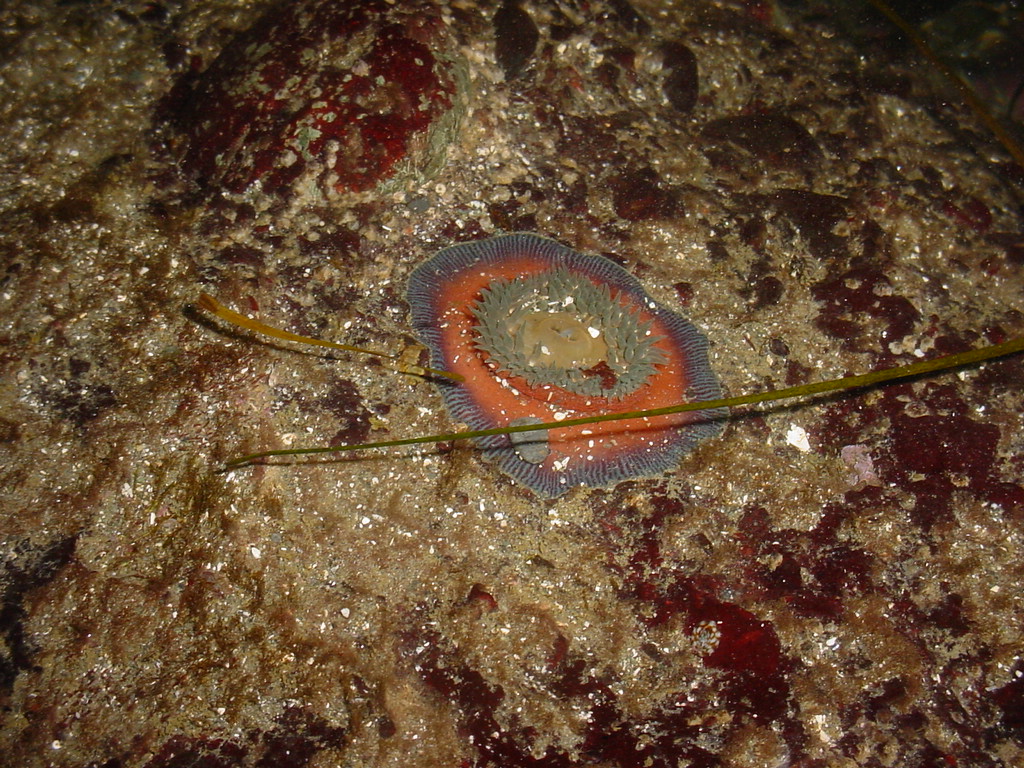 |
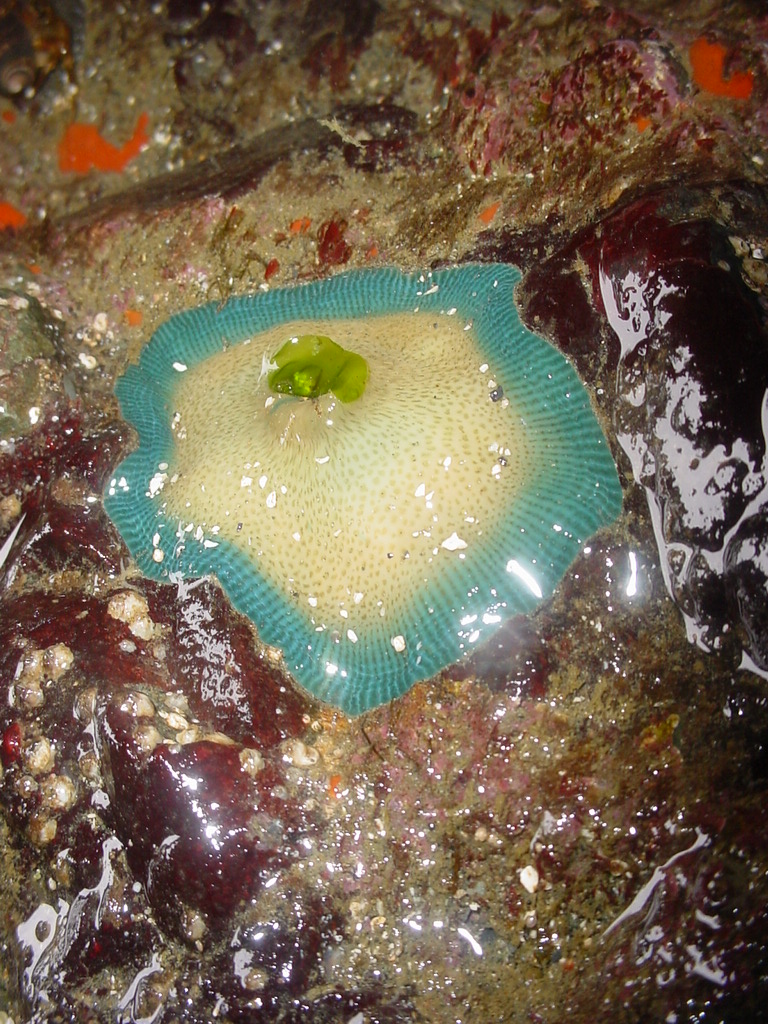 |
| An individual in a sea cave near Cape Flattery. About 5 cm diameter and 1 cm tall. | Another individual in a Cape Flattery sea cave. Note the unusual pale color (DLC 2004). According to Lisbeth Francis, the blue around the edge of the pedal disk seen here is usually more characteristic of large individuals of Epiactis prolifera or other species (compare this photo) than of E. ritteri. However, this individual and the one below do not have the lines up the column characteristic of E. prolifera. |
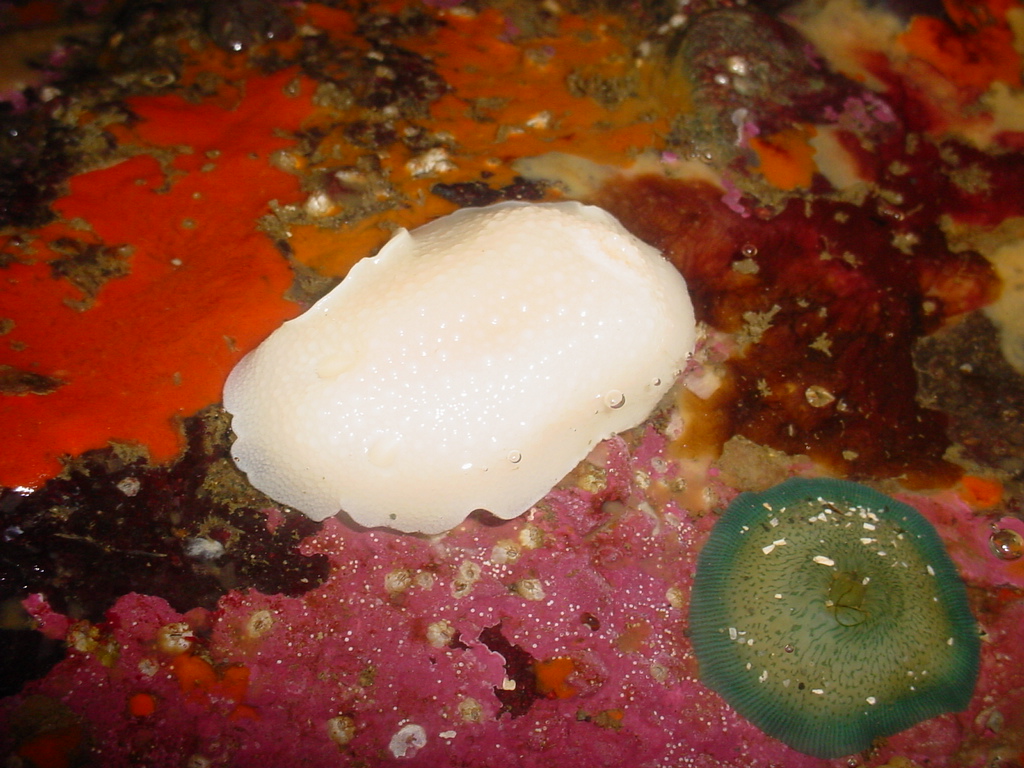
Here is an individual with a slightly different color pattern, next
to a nudibranch in a shallow tide pool (DLC 2004)
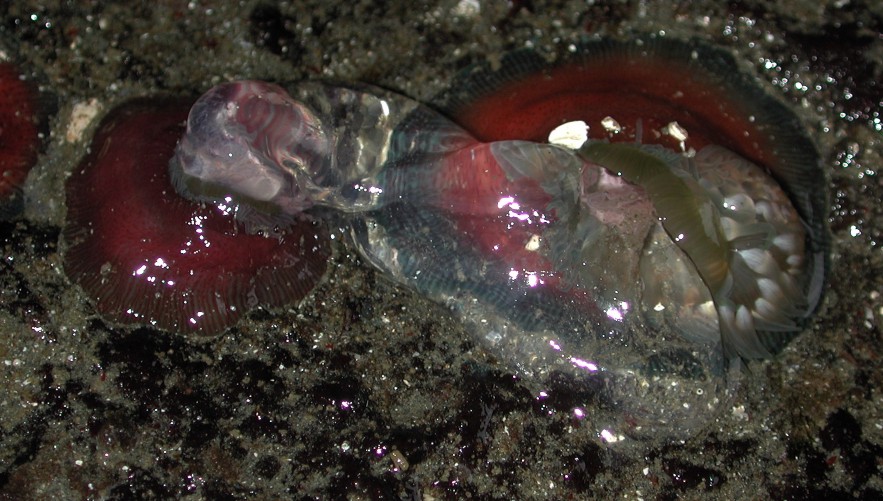
These two adjacent individuals appear to be attempting to swallow a
jellyfish. Photo by Dave Cowles, July 2008
Authors and Editors of Page:
Dave Cowles (2004): Created original page

